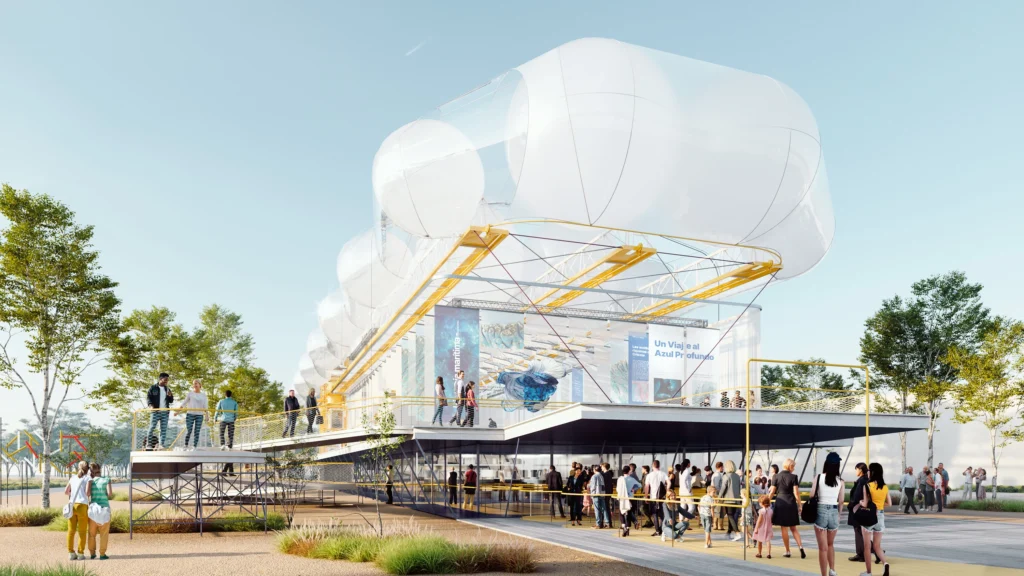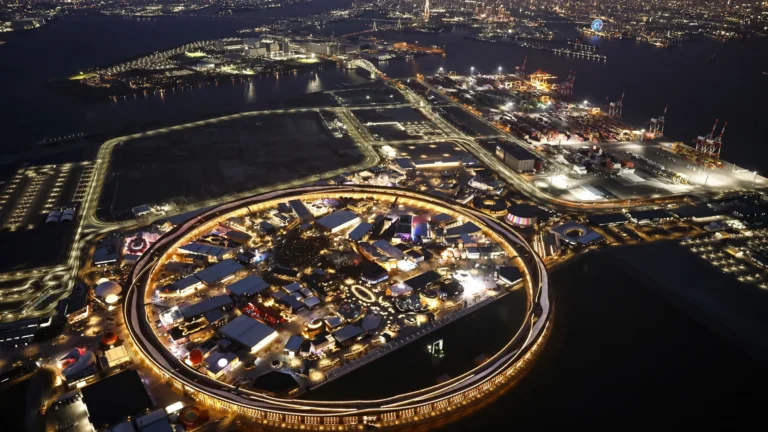When the gates to Expo 2025 swung open on April 13, crowds poured across Osaka’s reclaimed Yumeshima (“Dream”) Island to see what “Designing Future Society for Our Lives” looks like in practice. Fewer than two weeks later, the Expo had already welcomed its millionth visitor, out-pacing the celebrated Aichi 2005 fair, and by 26 April the official tally sat at 1.38 million paid guests
Ringed by Osaka Bay, the 155-hectare site is anchored by the Grand Ring — a two-kilometre wooden halo that doubles as an elevated promenade and nighttime light show. Japanese Prime Minister Shigeru Ishiba used the opening ceremony beneath the ring to call the Expo “a meeting place for a divided world,” underscoring its diplomatic as well as technological ambitions

At the centre of the grounds sit the eight Signature Pavilions, each helmed by a visionary producer and collectively dubbed the Brilliance of Life Project — a walk-through thought experiment on how biology, art and tech intersect.
Media previews highlight “Live Earth Journey,” an immersive planetarium-meets-theme-park ride by anime legend Shōji Kawamori, and “Dynamic Equilibrium of Life,” where biologist Shin-Ichi Fukuoka renders ecosystems as kinetic sculptures.
Sustainability you can touch (or ride)
- Hydrogen everywhere: A closed-loop hydrogen supply chain fuels buses, food stalls and even the Panasonic and NTT pavilions, offering a real-world test of Japan’s 2050 net-zero roadmap.
- Robot city: From room-service droids to “AI Suitcase” autonomous navigation carts for visually impaired guests, more than 150 service robots roam the venue as part of the Smart Mobility showcase.
- Recycled architecture: Spain’s eye-catching “Kuroshio Current” pavilion transforms nearly five tonnes of discarded fishing nets into shimmering façade panels, cutting CO₂ emissions by a third compared with virgin plastics.
- Sun-to-socket energy: Rooftop solar arrays feed an on-site micro-grid, while daily “Solar Innovation” forums connect policymakers with cleantech start-ups.

With more than 180 nations and organisations confirmed, diplomacy happens in queue lines as much as in conference halls. The Cartier Women’s Pavilion, for instance, spotlights climate activist Xiye Bastida and novelist Banana Yoshimoto in a lattice shell inspired by Kyoto townhouses, blending gender equality with architectural flair.
The projected payoff is equally ambitious: government economists now peg the Expo’s national ripple effect at ¥2.9 trillion (≈ US $19 billion), buoyed by construction booms and tourism spill-over across Kansai. Still, cost overruns and a price-tag topping ¥235 billion have critics asking whether the green dream is worth the bill

Why you’ll want to visit before the gates close
Between now and 13 October 2025, visitors can:
- Glide in a prototype flying-taxi simulator, then watch hydrogen-powered drones deliver parcels shore-to-shore.
- Collect digital “Life Stamps” in the Expo’s cashless wallet for discounted Kansai rail passes.
- Snack on the world’s longest sushi conveyor belt or sip matcha brewed by a six-axis robot arm.
Whether you come for the tech, the art or the world-class people-watching, Expo 2025 offers a preview of cities that might one day power themselves, sort their own trash and greet you with a smile from an AI concierge. Just don’t forget to wave at Myaku-Myaku, the blue blob mascot who has already achieved pop-idol status on Japanese social media.
